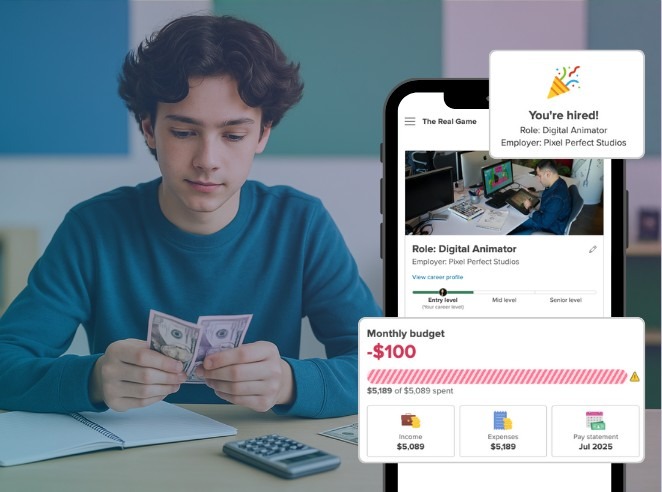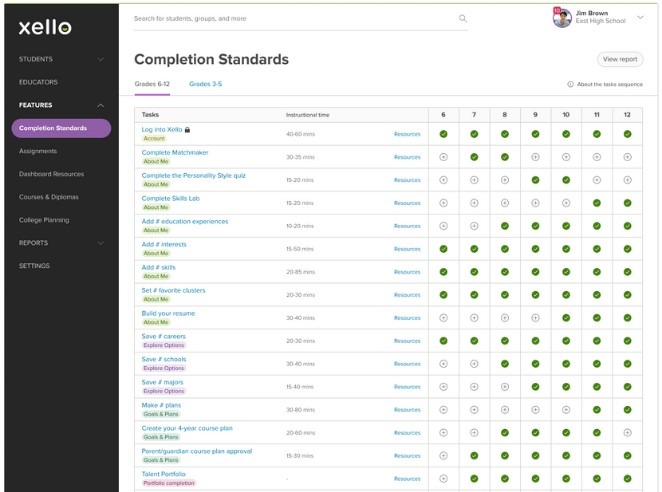What to Look for in a Future Readiness Program for Your Youngest Learners

The earlier the better, they say. Ever considered college and career readiness planning for your elementary students? Here’s why you should and where to start.
Legos, scooters, Minecraft, future readiness. The last item on that list might seem out of place, but there’s a reason why it’s there—we promise. If you didn’t already know, a future readiness program exists for your elementary school students. And it’s exponentially valuable.
Why? College and career readiness programs for your youngest learners assist in creating a foundation that will support students as they get older and develop beyond their academic years.
Free Guide: How Xello Prepares Your Youngest Learners for Future Success
Is K–5 Too Early to Implement a Future Readiness Program?
The short answer is no.
Some may turn their cheek at the thought of elementary school children focusing on future readiness. Do children at that age need to think about colleges and careers? Shouldn’t we allow kids to be kids?
Instituting a future readiness program at an elementary school is not a death knell for childhood. After all, young children often dream about what they want to be when they grow up.
While some ideas are more realistic than others (dragon slayer, for example, is not a realistic career choice), the point is to give them the means to spark curiosity, explore and develop. A study published in Professional School Counseling found, “during the elementary years, students are at a crucial period when career beliefs and aspirations are being developed.”
Consider this Imagination Report from Fatherly and New York Life. In a survey of 1,000 children under age 11, participants were asked what they want to be when they grew up. Top choices included doctors, veterinarians, police officers, fire fighters, and scientists. The report also noted that children are fickle, and their “dreams are less about the strategic deployment and future deployment of specific skills and more about admiration for particular adults or characters.”
The Common Core State Standards that were released in 2009 were adopted by all but four states by 2011 (several states later dropped Common Core and many dropped certain elements). One of the main goals of Common Core is to create college and career readiness for students. The preparation begins with elementary school students.
This belief that future readiness should begin in elementary school is shared by other organizations. A report from the American Institute of Research, an independent non-profit said, “vertical collaboration between elementary, middle, and high schools is essential to prevent gaps in curricula and ensure content mastery.”
Breaking Down an Effective Future Readiness Program
During elementary school, children engage in self-discovery. Introducing a college and career readiness program to your young students opens up the doors to precisely that.
An Edutopia article by Heather Wolpert-Gawron entitled Career Readiness: Starting Early With Young Learners suggests, “students need to feel comfortable ‘in their own skin’ and know about themselves.” This can happen through surveys, autobiographical essays, etc. Helping students recognize who they are and what makes them unique is an ongoing process, but will inevitably help them paint a clearer picture of the future.
As students begin to gain a greater understanding of themselves, their curiosity will only expand. Thoughts such as, where do I fit in the world? can arise. Before discovering a path, students need to recognize what’s out there, and what their options are. Not only does exposing children to multiple professions expand their understanding of the options out there, it also provides more ideas for inspiration.
While this is ongoing, there are appropriate ways to introduce career options to elementary school students. “One way is to incorporate the world of work into lessons,” says Wolpert-Gawron. “Find examples of how history relates to current professions.” Share what professionals do and how careers relate to work done in class. Consider reading books about particular professions and stories about people in professions. A college and career readiness program can include myriad elements.
Free Guide: How Xello Prepares Your Youngest Learners for Future Success
Opportunities within and outside of the classroom program can also be helpful. For example, taking young students on class trips to colleges and workplaces can be eye-opening. Inviting guests into the classroom to speak about their professions is another way to create career awareness. Opportunities to speak to people in various environments and have their questions answered helps students visualize their future.
Furthermore, we can’t forget about soft skills. Social-emotional learning is now recognized as a key to future success. In a post entitled, Why College and Career Readiness is an Integral Component of K-12 Education, Hanover Research notes the importance of soft skills, “a large body of recent research has established the importance of soft skills in fostering student academic achievement and long-term success ….”
The soft skills touted in the post “as holding the key to readiness and success … include communication, problem solving, teamwork, leadership, creativity, self-awareness, social responsibility, and self-management.”
An innovative way to implement SEL and college and career readiness programming in your elementary school classrooms is through online software. Programs like Xello for Elementary give your youngest learners a platform that encourages self-discovery, creates career awareness, and start future planning early. Through a number of interactive activities both online and in person, students have the freedom to think meaningfully about the future from a very young age.
Conclusion
Grade school is the time for young learners to spark their curiosities and develop a foundation for future planning. Providing a quality and developmentally appropriate college and career readiness program can help young learners dream of a great future and begin to forge a path toward it.




